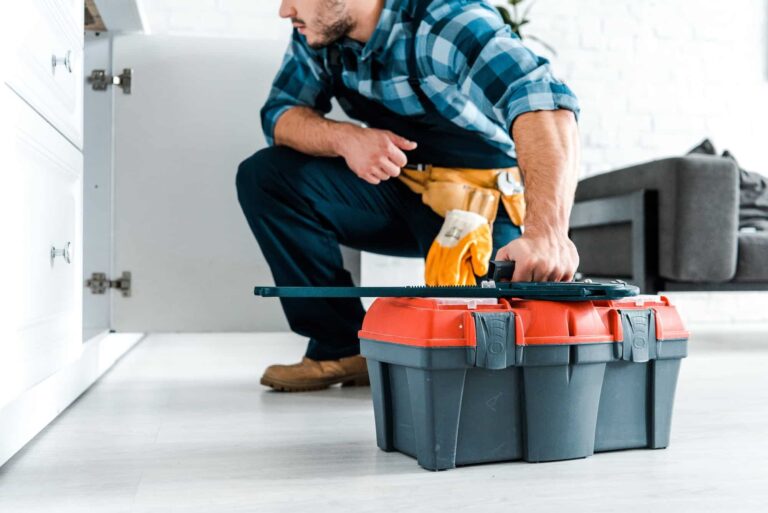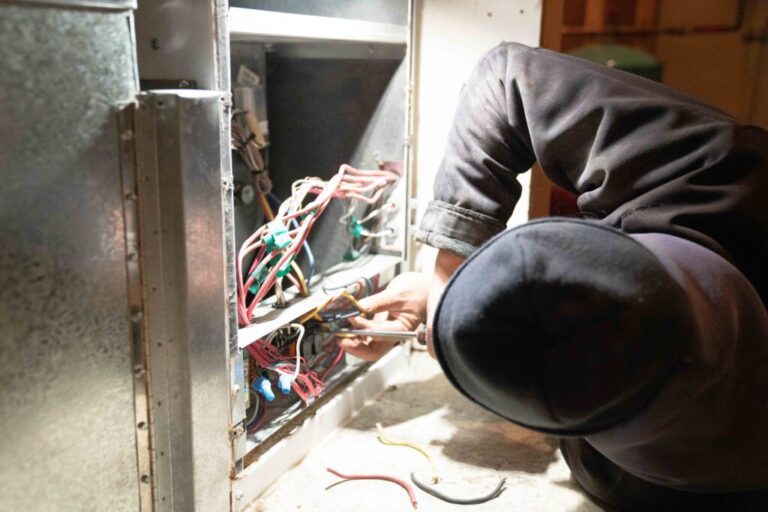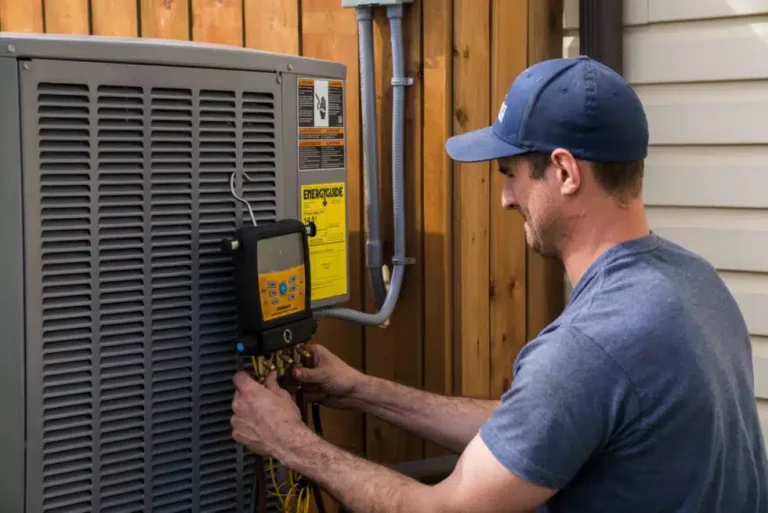Understanding the Importance of Winter Plumbing Checks
As the crisp air of winter approaches, ensuring your plumbing system is prepared for the cold months ahead becomes crucial. Winter plumbing checks are not merely a precaution but a necessity for safeguarding your home against potential damages that freezing temperatures can inflict on your pipes and fixtures. Understanding the importance of these checks can save homeowners from the inconvenience and expense of dealing with plumbing emergencies during the harshest season of the year.
Freezing temperatures pose a significant threat to plumbing systems, particularly in regions where the mercury can plummet unexpectedly. When water freezes, it expands, and this expansion can exert immense pressure on pipes, causing them to burst. A burst pipe can lead to extensive water damage, mold growth, and costly repairs, all of which can disrupt the comfort of your home during winter.
Beyond the immediate risks, regular winter plumbing checks also offer long-term benefits. By inspecting your plumbing system before the cold sets in, you can identify and address minor issues before they escalate into major problems. This proactive approach not only ensures that your system operates efficiently but also extends its lifespan, providing peace of mind and cost savings in the long run.
In summary, winter plumbing checks are an essential component of home maintenance, protecting both your property and your peace of mind. By taking the time to conduct thorough inspections and necessary repairs, you can enjoy a warm, stress-free winter season with fewer plumbing headaches.
Inspecting and Insulating Exposed Pipes
As the chill of winter approaches, ensuring that your plumbing system is prepared becomes a priority. One of the most crucial steps in safeguarding your home’s plumbing is inspecting and insulating exposed pipes. This preventative measure can save you from the costly repairs and inconveniences caused by frozen or burst pipes.
Why Inspect Exposed Pipes?
Before winter sets in, a thorough inspection of all exposed pipes is essential. Begin by identifying pipes situated in unheated areas such as basements, attics, garages, and crawl spaces. These areas are particularly vulnerable to freezing temperatures. During your inspection, look for cracks, leaks, or signs of wear and tear that could exacerbate in cold weather. Addressing these issues early can prevent significant damage and ensure your plumbing system remains functional throughout the winter months.
The Importance of Pipe Insulation
Once you’ve inspected the pipes, the next step is insulation. Pipe insulation acts as a protective layer that helps maintain a consistent temperature, reducing the risk of freezing. Various materials are available for this purpose, including foam tubing, fiberglass, and even heat tape for extreme conditions. While foam tubing is popular for its ease of installation and affordability, heat tape provides an added level of protection by actively warming pipes.
Properly insulating your pipes not only prevents freezing but also enhances energy efficiency by reducing heat loss. This can lead to lower heating bills, a welcome benefit during the colder months. By taking the time to inspect and insulate your pipes, you’re investing in the longevity of your plumbing system and the comfort of your home.
Ensuring Proper Drainage and Gutter Functionality
As winter approaches, ensuring that your drainage and gutter systems are functioning optimally becomes vital to protect your home from potential water damage. The proper flow of water away from your home is essential, particularly when dealing with melting snow and seasonal rainfall, which can lead to serious issues if not managed effectively.
First, inspect your gutters for any blockages that can hinder water flow. Leaves, twigs, and other debris can accumulate over time, leading to clogs. This debris can cause water to overflow, damaging your roof, siding, and even the foundation of your home. A thorough cleaning of the gutters, preferably before the first snowfall, is essential. Utilize a sturdy ladder to safely reach the gutters, removing any build-up and ensuring the downspouts are clear.
Next, assess the condition of your drainage system. Look for signs of wear and tear, such as cracks or misaligned pipes, which can lead to leaks or inefficient water flow. It’s advisable to conduct a water flow test by running water through the gutter system to ensure it drains effectively away from the house. Consider installing gutter guards to prevent future debris build-up, reducing maintenance needs.
Lastly, ensure that the ground around your home slopes away from the foundation. This grading will help direct water away, preventing it from pooling around the base of your house, which can lead to basement flooding and structural damage. By proactively maintaining your drainage and gutter systems, you can safeguard your home against winter’s harsh conditions, ensuring a dry and secure environment.
Testing and Servicing Water Heaters
As winter approaches, ensuring your water heater is functioning optimally becomes paramount to maintaining comfort in your home. A well-performing water heater is vital not just for hot showers but also for crucial tasks such as dishwashing and laundry. Therefore, before the colder months set in, it’s essential to test and service your water heater to prevent any unexpected disruptions.
Why Testing is Crucial
Testing your water heater involves checking its performance and efficiency. Look for signs of wear such as inconsistent water temperature, unusual noises, or leaks. These could indicate underlying issues that, if left unaddressed, might lead to costly repairs or even a complete system failure during the harshest winter days. Regular testing allows you to identify and solve problems early, ensuring a continuous supply of hot water.
The Benefits of Professional Servicing
Professional servicing of your water heater not only helps in detecting potential issues but also enhances its efficiency. Skilled technicians will perform a thorough inspection, including cleaning the tank to remove sediment build-up, checking the anode rod, and inspecting valves and thermostats. These steps are crucial in extending the lifespan of your water heater and improving its energy efficiency, which can lead to significant savings on your utility bills during winter.
By investing in regular testing and professional servicing, you ensure that your water heater remains reliable, providing you with the comfort and convenience of hot water, no matter how low the temperatures drop outside. This proactive approach is not just about immediate comfort—it’s about long-term savings and peace of mind throughout the winter season.
Checking for Leaks and Sealing Vulnerable Areas
As the crisp autumn air begins to signal the impending arrival of winter, it’s crucial for homeowners to perform essential plumbing checks to safeguard their homes against the harsh weather. One of the most critical steps in this preparatory process is meticulously checking for leaks and sealing vulnerable areas within your plumbing system. This proactive measure not only protects your property from potential water damage but also enhances the efficiency of your heating systems, ultimately saving on energy costs.
Begin your inspection by examining all accessible pipes, faucets, and connections for any signs of leaks. These often present as drips, water stains, or dampness around the pipes. Pay special attention to areas that have been previously repaired, as they are more susceptible to recurring issues. Should you find any leaks, even minor ones, it is imperative to address them immediately. Small leaks can quickly escalate into significant problems, especially when temperatures drop, causing pipes to freeze and potentially burst.
Once leaks are identified and repaired, proceed to seal vulnerable areas. Use weather-resistant caulk or foam insulation around exposed pipes, particularly those located in unheated spaces such as basements, attics, and garages. Insulating these pipes helps prevent freezing by maintaining a stable temperature, thus reducing the risk of pipe bursts during extreme cold spells.
Additionally, consider installing faucet covers on outdoor spigots and draining garden hoses to prevent water from freezing and causing damage. By taking these precautionary steps, you not only extend the life of your plumbing system but also ensure a warm, comfortable home throughout the winter months.




